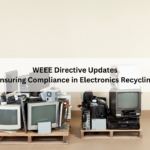With a clear objective to strengthen the Health care filings for 2015 and to help healthcare companies to meet the requirements of Section 1502, led us to analyze 2014 filings. We used sample data from 409 Health care companies, registered with the SEC.
Registrants of Health Care sector:
We initially broke the filings down by market capitalization and annual revenue of all the registrants of Health care sector. In comparison, 24% of the registrants had a market capitalization exceeding $1billion, 5% had a market capitalization exceeding $5 billion and only 2% had a market capitalization exceeding $20 billion. Since market capitalization is not the only denotive of the issuer’s size, we included annual revenue to the scope. 95% of the registrants had annual revenue exceeding $1 billion and 1% had annual revenue exceeding $250 billion.
Form SD Filers of Health Care Sector:
As shown below, the filings were further split between market capitalization and annual revenue of Health care Form SD filers. The results were similar. 23% of the Form SD filers had market capitalization exceeding $1 billion, 8% had a market capitalization exceeding $5 billion. Similarly, 96% of the Form SD filers had annual revenue exceeding $1 billion and 3% had annual revenue of more than $250 billion.
Health Care Filings of SEC:
According to our study, nearly 17% of the issuers filed Form SD while 83% did not file. The chart below shows the count for Health Care filers.
Health Care Filings by Category:
The chart illustrates that issuers across a wide range of industries made filings under the Conflict Minerals Rule. The information provided in the chart indicates the number of Form SD filers under each category of Health care sector. Our analysis indicates that Medical/Dental instruments may be the more advanced in their compliance efforts.
Form SD Specifications:
Apart from the analysis made based on market capitalization, annual revenue and category filings we have furnished a detailed structure of the SEC Filing.
1. Filing Components:
The Filing Components include Form SD (Specialized Disclosure) and CMR (Conflict Minerals Report). Most of the issuers filed both Form SD and a CMR. From the observations of calendar year 2014, of the 409 companies selected, 16 filed only Form SD, 52 filed both Form SD and CMR and 341 did not file. Percentage vise 76% of the issuers filled Form SD and a CMR. Remaining 24% issuers filled Form SD only.
2. Filling Length:
The length of Form SD and CMR has been calculated from the number of pages filed. 44% of the filings were in 5 or less page range which did not include a CMR. Generally a CMR will be filed as an exhibit to their Form SD. When considered separately for CMR page length, 79% of the filings were in 5 or less page range and very few under 6 -10 and 11 – 15 page range.
The longer CMRs include
- Conflict Minerals Policy
- RCOI process
- Due Diligence framework – OECD
- Smelter and Refiner information
3. Conflict Minerals Policy:
The most essential element demanded by the customer could be Conflict Minerals Policy. Some filers include Conflict Minerals Policy in both Form SD and CMR. In most of the cases, Conflict Mineral Policy had been discussed in the CMR only. The chart below shows the different approaches for the policy.
32% of the filers provided policy link, 13% described the policy but did not provide the link, 23% provided a link along with the policy and the remaining 32% mentioned that they had a policy.
4. Conflict Minerals Work Group:
The information on RCOI and Due Diligence process conducted by several work groups had been added to the filing components. The work group includes internal team and 3rd party consultant. The analysis over RCOI and Due Diligence work group information has been indicated in the chart. Approximately, 90% of the filers formed an internal team for RCOI and 10% for 3rd party consultant.
Similarly, 91% of the filers aligned their due diligence with internal teams, 3% preferred 3rd party consultant and the remaining 6% did not provide any information.
5. Survey Format:
Maximum number of filers preferred CFSI template to collect conflict minerals information from their entire supplier network. Nearly 78% of the filers gathered data through template, 3% framed Questionnaire and 1% for paper work. 12% of the filers did not mention the survey format.
6. Survey Result:
Among the companies surveyed, 38% filers indicated the number of suppliers surveyed and 41% filers indicated the number of suppliers responded. The response rate was found to be higher than the suppliers surveyed. Most of the filers did not include smelter or refiner information. Only 18% added smelter or refiner information to the filing.
What are the benefits of Reporting?
- It broadens understanding of the supply chain and source of the products
- Enhances of business risk assessment
- Enables holistic risk analysis
- Promotes and protects the brand for longevity
- Brings in competitive advantage by product differentiation
- Helps to meet the growing compliance needs in the market
- Establishes product knowledge along with its origin
- Improves performance
- Thrives Compliance strategy
- Drives companies to increase the transparency of the supply chain.
Recommendations for strengthening 2015 filing:
Having assessed the scenario, we realized that there is an opportunity to make healthcare supply chain more efficient and reliable by means of better compliance management. Implementation of RCOI, due diligence framework, supply chain management and audition can yield considerable market advantage to the new manufacturers. The companies that are required to file a Form SD and a CMR can form an internal team as working group for effective results. The use of CFSI templates for RCOI can help to decide the scope of the products and also to increase the response rate from the suppliers. The due diligence framework can be outlined with the OECD guidance which is the sole program recognized internationally. Although the process is difficult and tiresome, it earns benefit to the company and also strengthens the filer’s position in the US market. According to experts the new inclusion of reporting Human Rights abuse in the supply chain, will take some time to settle in the given environment. A strong need to build trust and communication in the data collection system will be required.
Thus it is crucial for Healthcare Manufacturers to adhere to conflict minerals reporting for enhancing company reputation. An integrated review of SEC filings can improve the reporting accuracy. Greater the transparency better the business.





